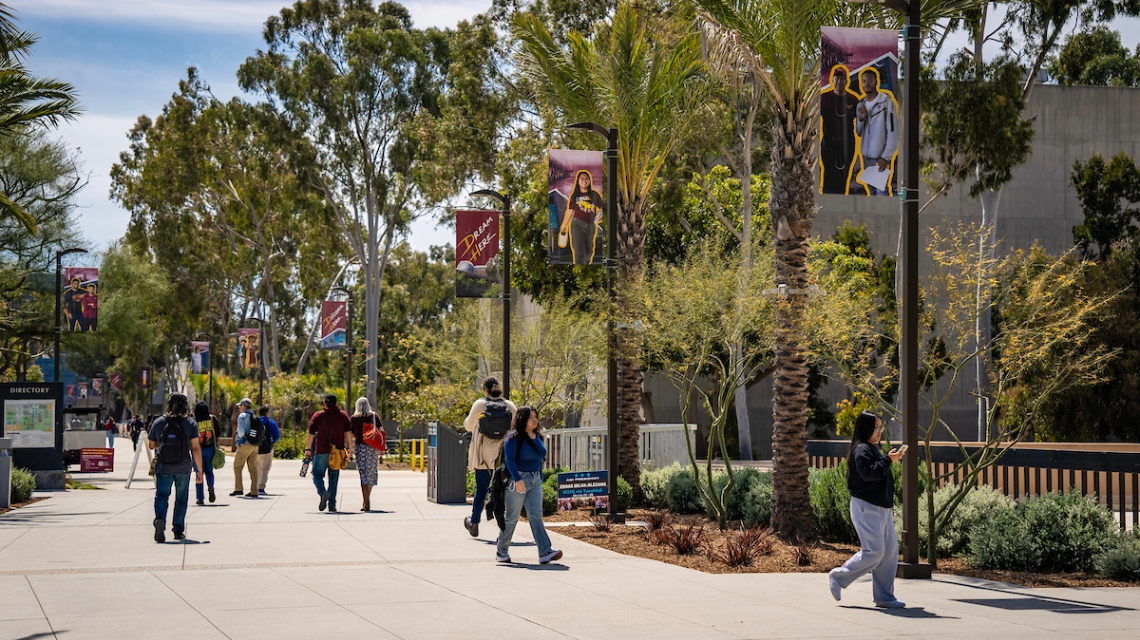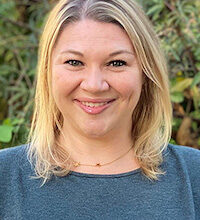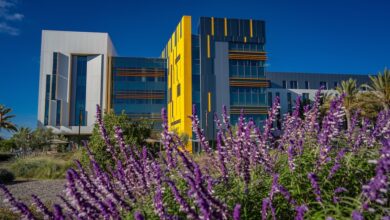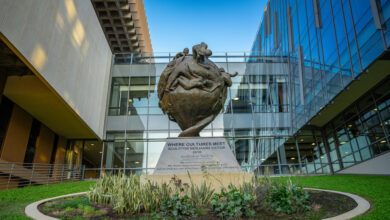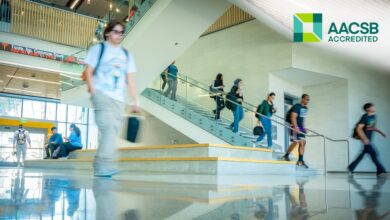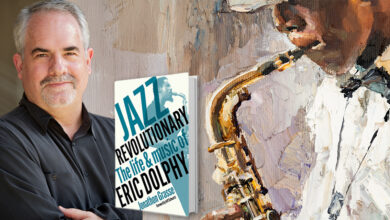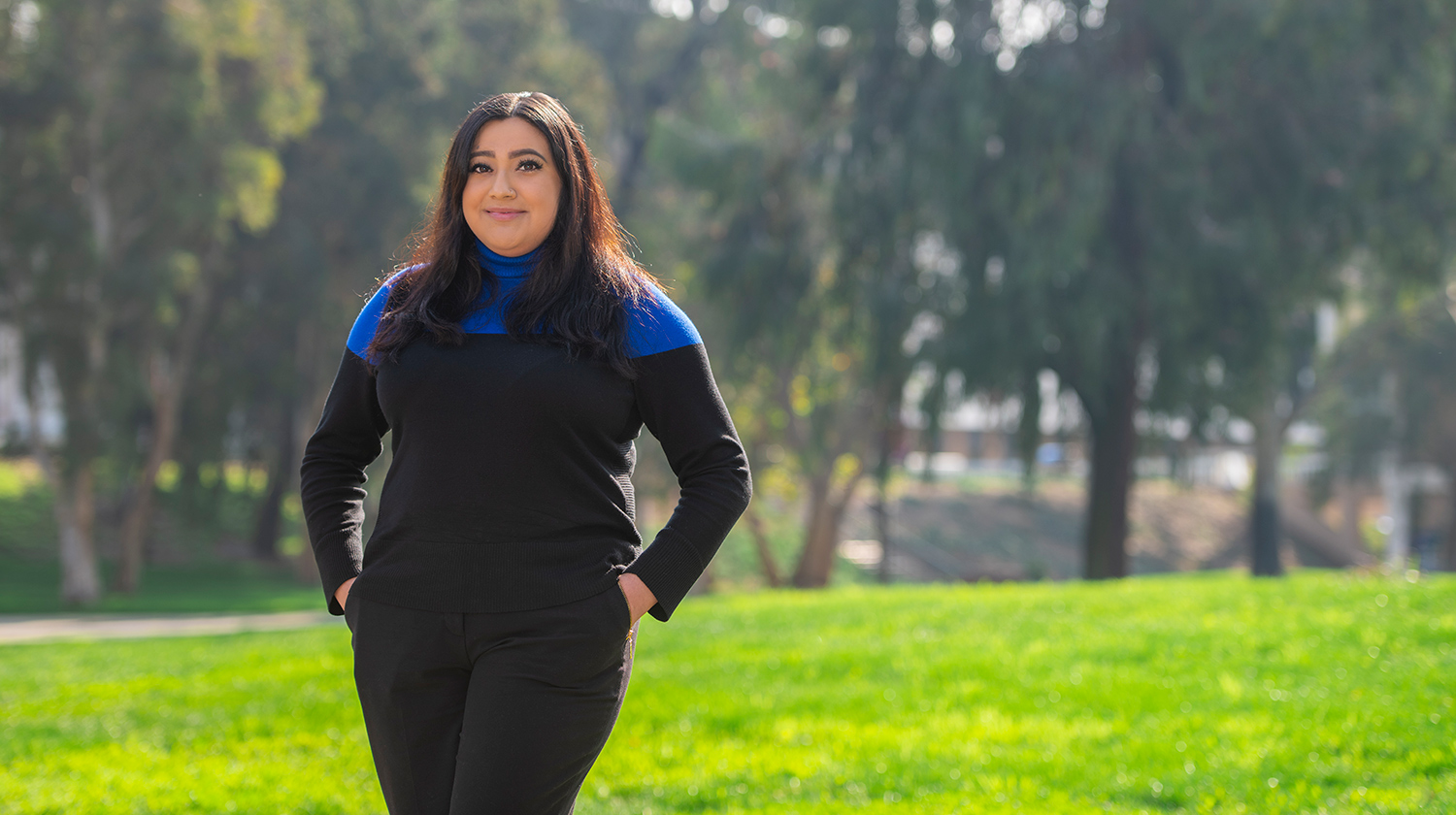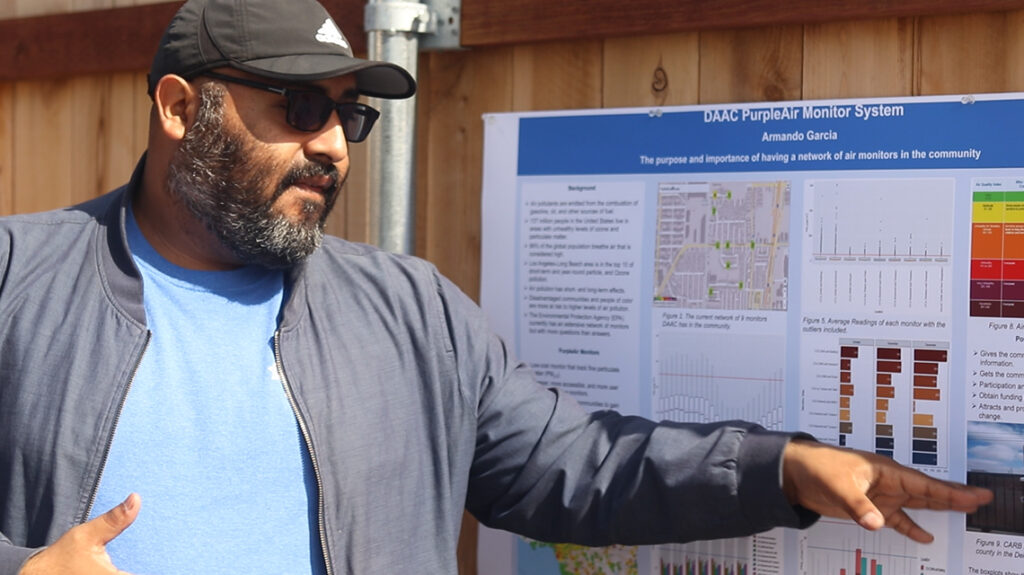
Cynthia Babich, founder of the Del Amo Action Committee (DAAC), doesn’t mince words when assessing the environmental hazards that have put residents of West Carson–predominantly low-income residents of color–at significant risk for decades.
“We’re choking here. We’re absolutely choking,” Babich said during a recent community open house, referring to the findings of a DAAC health report on airborne contaminants. In fact, air pollution is just one of many environmental risks that residents face.
The DAAC office stands just a few blocks south of the Del Amo Superfund Site. The office was founded in 1994 to inform residents about the high levels of soil and groundwater contamination–the sad legacy of decades of neglect by a synthetic rubber plant that operated at the Del Amo site from 1943 to 1972.
West Carson has a second Superfund site on land owned by Montrose Chemicals near the junction of Del Amo Boulevard and Normandie Avenue. Montrose was once the largest producer of DDT in the United States.
The improper disposal of toxic chemicals in unlined waste pits and evaporation pools–benzene, chlorobenzene, and DDT, among others–created widespread contamination of the soil and groundwater supply in West Carson and adjacent areas of the South Bay.
“We’re facing a 5,000-year cleanup here,” Babich said. “It’s really longer than that, but that’s how long it’ll take just to make the groundwater safe. Not everyone understands this. That’s why we need to continue our work.”
New partnerships and a new generation of researchers are vital to advancing the work of the DAAC, says Margaret Manning, a longtime consultant who supervises the organization’s internship program. In recent years, students from CSUDH have increasingly stepped in to fill that need.
“We’re so close to CSUDH, and the environmental issues we address are so complex. Students really ought to be here,” said Manning, a former adjunct assistant professor at CSUDH who received her master’s degree in Negotiation, Conflict Resolution, and Peacebuilding from the university.
Armando Garcia, a second-year graduate student in environmental science, interned at DAAC before joining the staff as a research consultant. He specializes in the collection and analysis of air pollution data, and his research was included in the DAAC’s recent health report.
“I grew up in Lennox, next to LAX. That’s what made me interested in the subject of airborne contaminants,” Garcia said. “My ultimate goal is to apply what I’ve learned to communities like this, communities like my own. People just don’t know how bad it is here.”
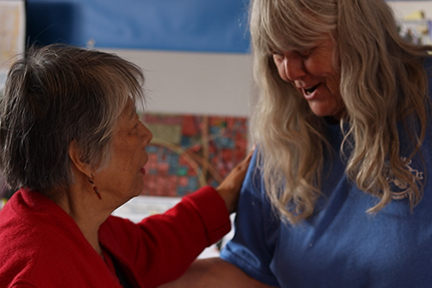
Tianjun Lu, an assistant professor of Earth Sciences at CSUDH, mentored Garcia and introduced him to the DAAC. “The university is not only a partner but a hub for community action and engagement,” Lu said. “I encourage all my students to apply their coursework to resolving local problems.”
CSUDH students from several disciplines have found ways to contribute their expertise to the DAAC’s work. Bryan Castro graduated in 2019 with a degree in history. His internship at the Gerth Archives and Special Collections under its director Greg Williams introduced him to the work of the DAAC.
“I’m currently in the process of digitizing VHS recordings that date back to the mid-1990s,” said Castro, who is also a member of the DAAC board. “These tapes contain important footage of soil excavations and contamination testing, EPA meetings, and other documentary evidence of health risks facing residents of West Carson.”
Archiving empirical data provides an important resource for scholars, says Williams, who has had discussions with a few environmental groups about their digital collections. “Access to this data allows students to track how local environments have improved or degraded over time, while also offering them interesting ideas for future research projects.”
Orji Ulu Ezieme completed his M.Sc. in environmental science at CSUDH in 2021. He interned with DAAC in 2019 and has since joined the organization as a research consultant. His recent work includes a grant-funded truck count to assess the impact of commercial truck traffic on air pollution in West Carson.
“West Carson is already overly congested with traffic, and it’s only getting worse,” Ezieme said. “And yet, we’re getting more and more commercial warehouses. Our truck research found nine hotspots in the area where airborne particulate consistently registers higher than the acceptable level.”
The collection of truck traffic data is critical, says Babich. Companies operating in West Carson do so based on conditional permits. Only a certain amount of truck traffic is allowed. Collecting traffic data helps document violations that could prevent the renewal of these permits.
“When a permit comes up for renewal and we have a record of violations, then maybe that company gets replaced by something else,” Babich said, adding that the stakes are higher than most people fully understand.
“The Boys and Girls Club in West Carson is located right next to the Montrose Superfund Site and Jones Chemical, which is a chlorine transfer station. We’re just one accident away from people dying.”
Babich adds that environmental risks are not just a West Carson problem. “The chances of a member of our community moving into another contaminated area are very high. We’re not just teaching residents about specific examples of environmental abuse. We’re teaching them to question authority and be engaged.”

